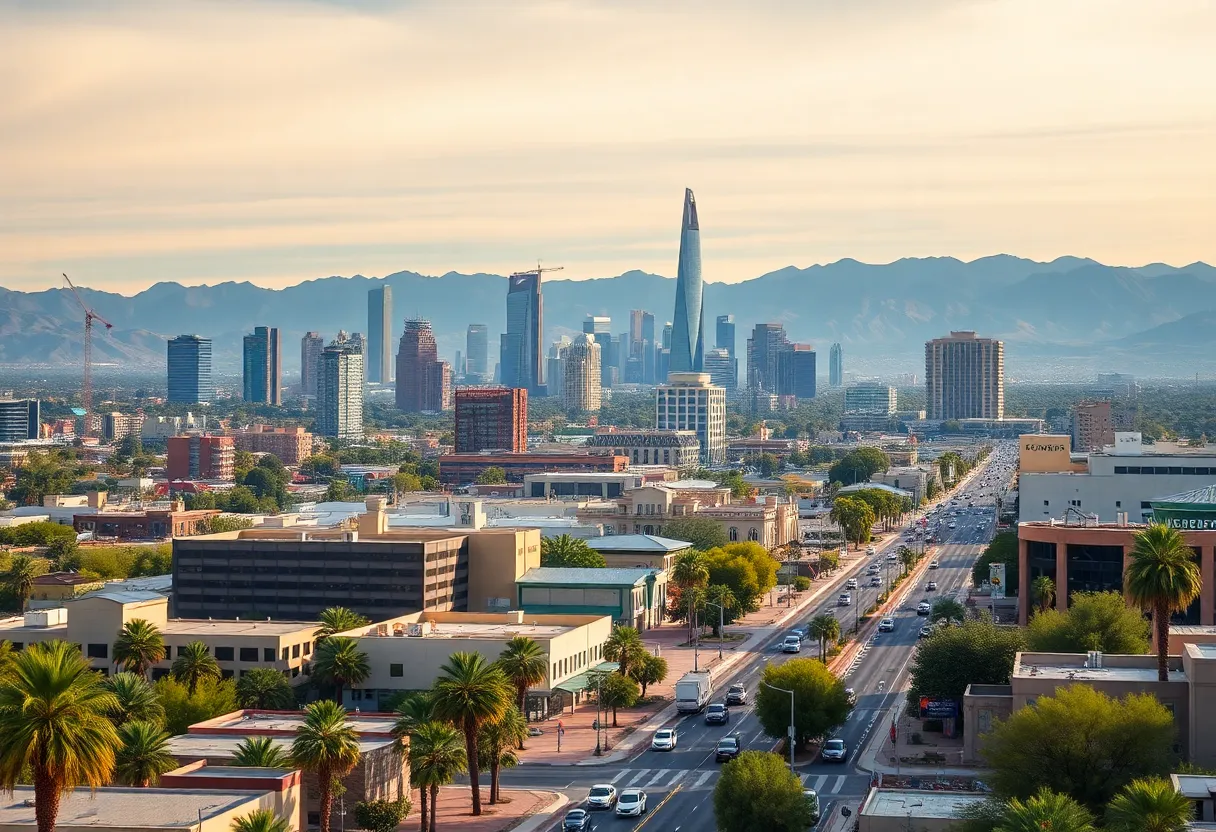News Summary
Phoenix, Arizona, has officially become the fifth-largest city in the U.S., with a population increase of 16,933 residents from July 2023 to July 2024, totaling 1,673,164. While the city achieved significant numerical growth, its percentage growth rate ranks lower nationally. The broader metropolitan area also saw a surge of almost 85,000 people, driven largely by international migration. This demographic change emphasizes the importance of migration for Phoenix’s growth amid rising housing prices and economic shifts.
Phoenix, Arizona has solidified its position as the fifth-largest city in the United States, according to recently released data by the U.S. Census Bureau. The city recorded a significant population increase, gaining 16,933 new residents from July 1, 2023, to July 1, 2024, bringing its total population to 1,673,164. This marks a growth rate of 1% for the year.
While Phoenix registered the eighth-largest numerical population growth in the nation, it ranks 729th among cities with populations exceeding 20,000 based on percentage growth within the same timeframe. This indicates that while the city is still expanding, its growth rate is considerably lower compared to other cities in the Valley, particularly Queen Creek, which leads Arizona’s cities in percentage growth.
The broader Phoenix metropolitan area also experienced a substantial increase in population, growing by nearly 85,000 people during the same period. This growth is largely attributed to international migration, which has emerged as a crucial factor in the city’s demographic changes.
Components of Population Growth
The population rise in Phoenix stems from a combination of natural changes, transplants from other U.S. cities, and international newcomers. Notably, there were approximately 14,500 natural changes (births exceeding deaths), alongside 21,000 transplants from various states, and nearly 49,000 international arrivals. In contrast, Tucson’s population would have decreased without migration, but it still recorded an increase of over 11,500 people.
Demographic Trends and Economic Impact
Demographers highlight that migration is becoming increasingly crucial for the population growth of Phoenix and the surrounding areas, especially as birth rates decline and death rates increase. Trends indicate that domestic and international migration play a significant role in the state’s overall growth. Furthermore, recent Census figures reveal that Maricopa County’s population growth is now entirely reliant on immigrants, underscoring the community’s dependency on these newcomers.
Arizona, as a whole, boasts nearly 1 million immigrants living within its borders, contributing notably to the state’s demographic expansion. However, this influx has also resulted in escalating housing prices and affordability issues. Current trends show housing prices in Phoenix increasing modestly by 3.4% year-over-year as of October 2024, while the Phoenix metropolitan area’s consumer price index rose by 1.6% in the same period, which is below the national inflation average of 2.6%.
Employment and Economic Conditions
Despite a slight slowdown in population growth, Arizona’s job market remains robust, with preliminary data indicating an increase of 65,000 jobs over the past year. The state’s unemployment rate currently stands at 3.6%, which is lower than the national rate of 4.1%. Projections for job growth remain positive, anticipating an acceleration of 2.9% in 2024.
Future Projections
Looking ahead, the forecasts for Arizona indicate potential declines in population growth due to shifting demographics and economic obstacles, including high mortgage rates. Experts caution that changing immigration policies may also influence the state’s growth trajectory, and as such, continued attention to these factors is necessary for understanding Arizona’s future demographic landscape.
Deeper Dive: News & Info About This Topic
- ABC15 News
- Wikipedia: Phoenix, Arizona
- Axios
- Google Search: Phoenix Arizona population growth
- CoStar
- Google Scholar: Phoenix Arizona demographics
- AZ Family
- Encyclopedia Britannica: Arizona
- Florida Phoenix
- Google News: Arizona population growth

Author: STAFF HERE PHOENIX WRITER
The PHOENIX STAFF WRITER represents the experienced team at HEREPhoenix.com, your go-to source for actionable local news and information in Phoenix, Maricopa County, and beyond. Specializing in "news you can use," we cover essential topics like product reviews for personal and business needs, local business directories, politics, real estate trends, neighborhood insights, and state news affecting the area—with deep expertise drawn from years of dedicated reporting and strong community input, including local press releases and business updates. We deliver top reporting on high-value events such as the Waste Management Phoenix Open, Cactus League Spring Training, and Arizona State Fair. Our coverage extends to key organizations like the Greater Phoenix Chamber of Commerce and Visit Phoenix, plus leading businesses in technology and healthcare that power the local economy such as Intel and Banner Health. As part of the broader HERE network, including HERETucson.com, we provide comprehensive, credible insights into Arizona's dynamic landscape.





